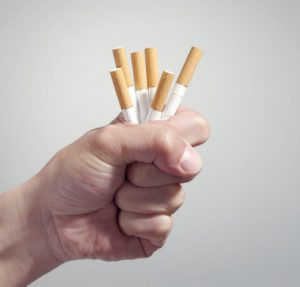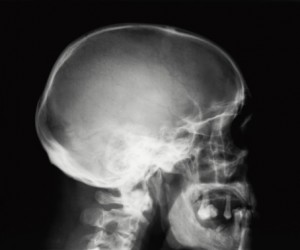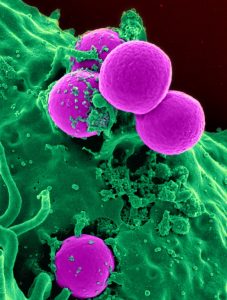Birth Defects Due To Harmful Chemicals
Each year nearly 120,000 babies in the United States are affected by birth defects. One of the known causes of birth defects is environmental factors such as contaminants and chemicals.
Environmental contaminants such as chemicals and industrial products are responsible for approximately 10 percent of all birth defects. There are over four million chemicals present in the home and work environments. While many of these chemicals are not harmful, some of those found in the home, workplace, food sources, air and water may pose the threat of birth defects.
Employers have a responsibility to protect their employees from substances which cause developmental malformations known as teratogens.
The Occupational Safety and Health Administration (OSHA) is the federal agency responsible for setting and enforcing these workplace standards.
The Environmental Protection Agency (EPA), on the other hand, is responsible for controlling the maximum levels of hazardous substances in the air, water and land.
The Food and Drug Administration (FDA) regulates the presence of hazardous constituents in food, drugs and cosmetic products.
While all of these agencies work to protect the health of the public, it is still possible for a pregnant woman to be exposed to these harmful chemicals.
Lead
Lead is a hazardous substance that should be avoided at all times. It is particularly important to avoid when pregnant as it is passed freely from mother to child via the placenta. The primary sources of lead exposure are contaminated soil, lead-based paint and occupational exposure. The risk of lead exposure also arises from the handling of crystal, ceramics, scented candle wicks, plastic handle grips and arts and crafts materials also contain lead. Even drinking water can be contaminated from leaded pipes.

There is no particular pattern of birth defects characteristic of lead exposure. Some birth defects that can be caused by lead exposure during pregnancy include:
- Skin tags and other skin markings
- Undescended testicles in males
- Shortened gestation/premature delivery
- Low birth weight
- Premature rupture of fetal membranes (PROM)
- Spontaneous abortion/ miscarriage
- Neurological damage
- Developmental delays
The level at which lead is considered toxic is actually much lower than previously thought. Even low levels of lead in the blood are suspected to pose a threat to the central nervous system.
Mercury
Exposure to methyl mercury during prenatal development can have an adverse affect on fetal nervous system development. While mercury exposure has historical been linked to industrial use, recent news has focused on fish and seafood as being the primary sources of mercury poisoning. Certain types of fish and other seafood contain high levels of mercury, which can pose a risk of teratogenic effects on an unborn child. The longer a fish lives the more mercury accumulates in its tissues.
The FDA advises pregnant women, nursing mothers, and young children to avoid consumption of shark, swordfish, tilefish, and king mackerel due to high levels of mercury in these long-living fish. According to the FDA, women can consume 12 ounces of COOKED fish (not including those mentioned above) each week. Other state officials caution pregnant women against eating fresh caught or frozen tuna steaks.
Consumption of the following fish should also be limited:
- Halibut (one meal per month)
- Salmon and shellfish (two to three meals per week, maximum)
- Canned tuna (less than one can of six-ounce tuna per week)
- Cod, Pollock, Haddock (one meal per week)
PCBs
Another dangerous contaminant in fish is a toxin called PCB, or polychlorinated biphenyl. In a study of women who consumed fish from the contaminated waters of Lake Michigan, babies born with prenatal exposure to PCBs were more likely to have chronic brain damage, decreased cognitive abilities, and lower intelligence. The risks posed by PCBs are similar to the threat posed by lead exposure. Fish from the Great Lakes pose a significant risk of PCB exposure. Once PCB-contaminated foods are ingested, this poison is stored in fatty tissues permanently.
PCB exposure in the work environment is another major issue for pregnant women. PCBs can be present in the manufacture of motors, switches, transformers, and other electrical equipment. PCB-containing oil was used as a coolant for several years before its ban in the 1970s. Unfortunately, industrial residues containing PCBs are still present and pose a threat of poisoning and food contamination.
Arsenic and Cadmium
Arsenic and cadmium are both metals, which can pose a threat to the developing fetus. Evidence suggests that women living near metal smelters, agricultural areas where arsenic-containing fertilizers were once used, or hazardous waste sites or incinerators are at greater risk for miscarriage and stillbirth.
Here are the best ways to protect yourself from the birth defect risks posed by arsenic and cadmium.
- Have your water tested for arsenic, or drink only well-filtered water.
- Limit contact with the soil.
- Avoid wood dust from construction projects (as pressure-treated wood may contain arsenic).
- Workers in the metal, herbicide or semiconductor manufacturing industries should avoid bringing metal home on clothing.
Cadmium is present in semiconductor manufacturing, welding, soldering, ceramics and painting industries and applications. Pregnant women may wish to have the following products removed from the home to avoid cadmium exposure or cadmium poisoning:
- Fungicides containing cadmium chloride
- Ceramic and glass glazes
- Certain fabric dyes
- Some fertilizers
Pesticides
Pesticide exposure should be avoided whenever possible during pregnancy. Insecticides, herbicides and other pesticides may contain numerous chemicals used to eradicate unwanted insect and flora.
Experts recommend the following precautions regarding insecticides:
- Have pesticide sprayed in absence of pregnant women.
- Remove all cookware and eating utensils from the environment before application.
- Close all windows and turn off air conditioning when pesticides are used outside the home.
- Women should avoid treated areas for at least eight hours following application.
- The area must be adequately ventilated during the hours after application.
- Wear rubber gloves when gardening.
- Products containing high concentrations of DEET (insect repellants) should be avoided during pregnancy.
- Lice treatment Kwell is to be avoided during pregnancy, since it has been associated with central nervous system toxicity.
The following pesticides are known to disrupt the endocrine system and may increase the risk of birth defects: alachlor, amitrole, atrazine, carbaryl, chlordane, dieldrin, DDT, endosulfan, oxycholordane, metribuzin, nitrofen, fungicides, benomyl, metiram-complex, hexachlorobenzene, mancozeb, maneb, tributyl tin, zineb, zirem and many more.
Carbon Monoxide
 By and large, that which is toxic to the general population is also toxic to developing fetuses. Carbon monoxide is one such example. Many residential areas are adding carbon monoxide monitors to alert people in the event of dangerous levels of this gas in the environment. The primary sources of carbon monoxide are furnace gas fumes, automobile exhaust, cigarette smoke and industrial exhaust.
By and large, that which is toxic to the general population is also toxic to developing fetuses. Carbon monoxide is one such example. Many residential areas are adding carbon monoxide monitors to alert people in the event of dangerous levels of this gas in the environment. The primary sources of carbon monoxide are furnace gas fumes, automobile exhaust, cigarette smoke and industrial exhaust.
The extent of carbon monoxide exposure can be difficult to determine without knowing levels of CO in the air and the subsequent levels in an individual’s blood. Typically, the severity of the mother’s exposure is used to gauge the risks for her child. Exposure to carbon monoxide can increase the risk of low birth weight and premature delivery.
It is important for women NOT to smoke and avoid secondhand smoke when pregnant to decrease the risks of carbon monoxide related birth complications. Pregnant women and those in the general population should also avoid other sources of carbon monoxide.
Organic Solvents
Organic solvents are used commercially and at home to dissolve other substances. These solvents can include alcohols, paint thinners, lacquers, nail polish removers, silk screening inks, paints, degreasers and varnish removers. Exposure to organic solvents during the first trimester of pregnancy can increase the risk of birth defects like spina bifida, heart defects, clubfoot and deafness THIRTEEN-FOLD.
Toluene
Also called methylbenzene, toluene is the most frequently used organic solvent in the home and workplace. Common sources of workplace exposure include shoemaking, painting, printing and adhesive industries, as well as laboratories. Varnishes, gasoline, spray paints, glues, lacquers, solvents and other applications containing toluene should be strictly avoided during pregnancy. Studies show that toluene exposure can increase the risk of spontaneous abortion, fetal asphyxia and low birth weight.
Xylene
Xylene is the second most common solvent used in industrial applications. Studies show this solvent increases the risk of spontaneous abortion.
Methyl Ethyl Ketone (MEK)
METHYL ETHYL KETONE (MEK) is a colorless organic solvent commonly used in industrial cleaning applications. MEK exposure is common in the workplace. When used as a solvent, without proper safety precautions, individuals can be exposed to several hundred times greater a dose than permitted by regulations. Animal studies have established a definite link between methyl ethyl ketone exposure and growth retardation of a developing fetus. Birth defects from MEK can include brain damage (particularly the cortex region), microcephaly (abnormally small head size) and other related complications. Idiopathic microcephaly often points to environmental causes.
Glycol Ethers
Glycol ethers are commonly found in photographic applications, silkscreen printing and dyes. According to one study, women working in semiconductor plants were found to be three times more likely to suffer miscarriage as a result of glycol ethers, compared to the general population.
Chlorine
Chlorinated drinking water has gained significant controversy due to its possible risks in pregnancy. Evidence shows the chlorine in the water can react with other materials to form teratogenic materials called trihalomethanes. Studies suggest consumption of chlorinated drinking water can increase the risk of miscarriage and poor fetal growth. For this reason cleaning products containing chlorine should also be avoided during pregnancy.
Paint
Exposure to paint containing any of the aforementioned chemicals should be avoided during pregnancy. Generally speaking, acrylic, water paints and tempura paints are favored over oil and latex paints as their chemical components are less likely to cause birth defects. Oil based and latex based paints, on the other hand, as in the case of paint containing lead, should be avoided by pregnant woman in order to reduce the likelihood of birth defects.
Other Risks
 X-rays and radiation
X-rays and radiation
Exposure to x-rays during pregnancy should be avoided whenever possible, as radiation emitted from x-rays can increase the risk of birth defects. Women in working in fields where x-rays are used should be concerned about protecting themselves from radiation exposure. Birth defect risks relating to such exposure can include miscarriage, mental retardation, abnormal fetal growth, congenital malformation (e.g. microcephaly) and increased risk of childhood cancer.
Dibutyl Phthalates (DBP)
Dibutyl Phthalates (pronounced tha-lates) are a family of industrial chemical plasticizers used as a softeners or solvents in many different consumer products. They are found in toys and in many beauty care products, including deodorants, nail polish, hair sprays and perfumes. Phthalates are used in cosmetics because they make nail polish flexible, bleed chemicals of fragrances and cause lotion to better penetrate the skin. They can be absorbed through the skin, inhaled as fumes or ingested as when a child sucks on a toy.
While numerous animal studies have shown that phthalates can cause birth defects, damage the kidneys, the liver, the lungs and the reproductive system, they are not always required to appear on the labeled of products..
In a recent study the Centers for Disease Control and Prevention (CDC) tested 289 adults aged 20 to 60 for seven metabolites associated with exposure to phthalates. Amazingly they found it present in all people tested, with women of childbearing age having the highest levels.
According to the Environmental Working Group, exposure to phthalates is unnecessary, as there are available alternatives for virtually every product that contains the chemical. In fact, in January 2003, the European Parliament banned the use phthalates in cosmetics and personal care products.\
Other Chemicals

Numerous other chemicals found in the workplace other than those previously mentioned can pose a threat to the developing fetus, including:
- Dioxin
- PBBs
- Chlorinated hydrocarbons
- PCP
- Styrens
A Special Note about Workplace Exposure to Teratogens
Chemical hazards pose a threat when a pregnant woman is exposed through one or more of the following methods:
- Ingestion through food, drink or medication
- Absorption through the skin or mucous membranes
- Inhalation
Chemical exposure during pregnancy undoubtedly creates a greater risk of delivering a child with birth defects. If you worked with chemicals during your pregnancy and your child suffered birth defects, it may be possible for both you and your child to seek compensation for pain, suffering, medical expenses and the costs associated with raising a child with such injuries.
Contact an Experienced Birth Defect Attorney in New York
If your child suffered birth defects because of prenatal exposure to environmental teratogens or maternal exposure to chemicals in the workplace, you and your child may be able to seek compensation for your economic losses, cost of medical treatment and pain and suffering.
Please contact us to speak with a qualified and experienced attorney at The Oshman Firm about your legal rights and options. We offer a free, no-obligation consultation to answer your questions and determine the best way to protect you and your family.
